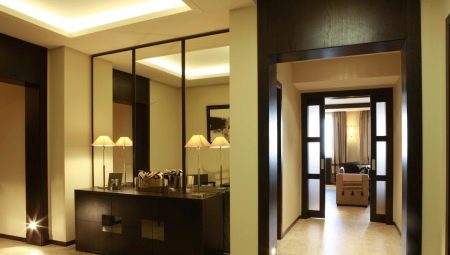Many hallways of city apartments have no windows at all. Daylight penetrates here only partially through the open doors of rooms and kitchens. Compensate for this moment with a well-designed instrument system. At the same time, light sources should not be annoying. On the contrary, they should softly, but fully illuminate all corners of the room, emphasizing its advantages and design. This article will tell about the features of the organization of lighting the corridor, the types of devices and the nuances of their choice.
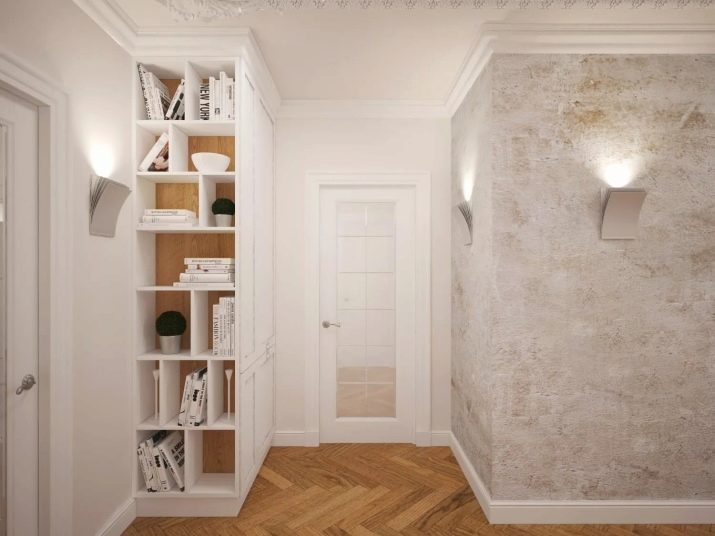
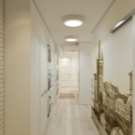
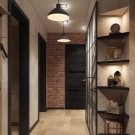

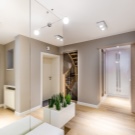
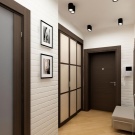
Primary requirements
Thinking through the lighting system in the hallway, it is important to consider several points. This will help to choose the right artificial light sources and correctly place them. Then the room will be bright and comfortable, and you will be pleased to return home.
- Optimum brightness. Lighting should not be dim. In this case, it will be difficult to tie the shoelaces, look for something in the bag, or even examine yourself in the mirror before leaving the house.
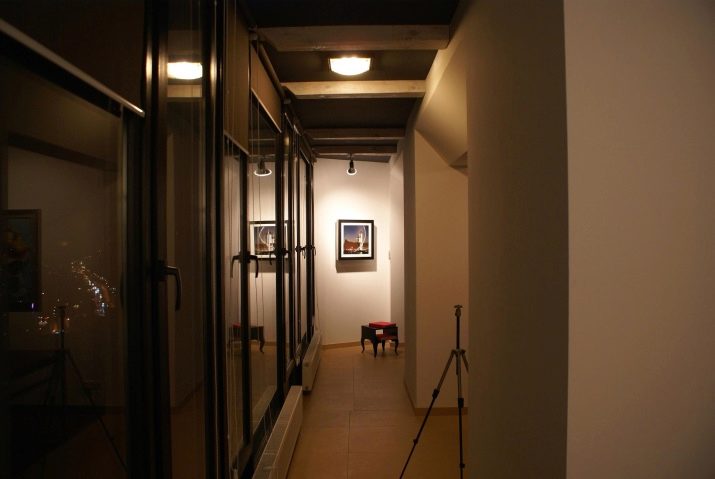
However, too bright light is also useless. So defects of finishing and design flaws (if any) will be striking.
In addition, going into the apartment from a semi-dark staircase, you will feel an unpleasant pain in the eyes due to brightness. The best option is diffuse lighting. This effect can be achieved with matte shades and some tricks of placing devices. For example, you can direct them not down, but up. So the light will be reflected from the ceiling and gently scattered around.
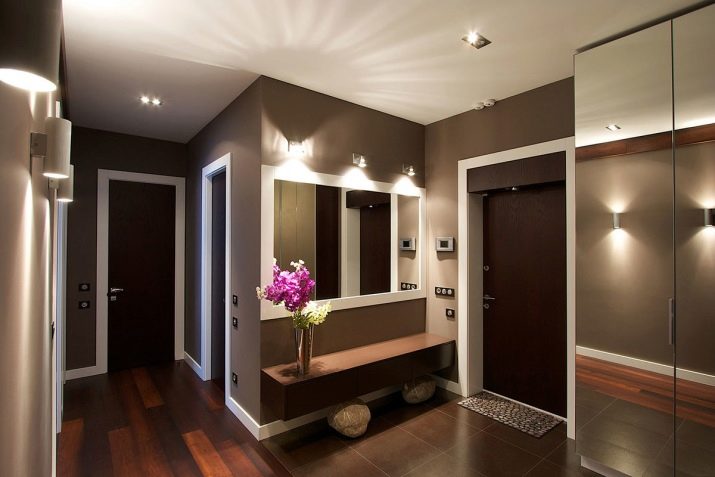
- Light unity. Illumination of the entrance hall and other places in the house (rooms, kitchen, bathroom) should be maintained at the same level.Moving around the apartment, you will feel yourself in a single harmonious space. In order for this condition to be observed at any time of the day, several lighting fixtures are usually purchased for the hallway.
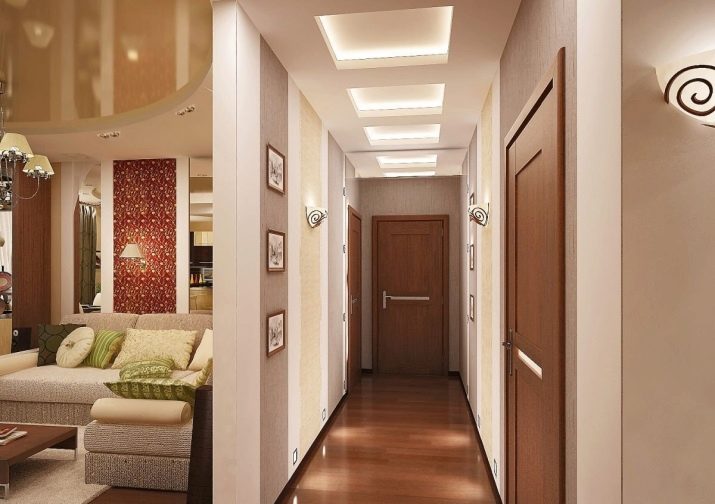
- Right size. If you want to hang a lamp with a hanging ceiling or decor elements in the hallway, pay attention to the height of the ceiling. A person should not reach the subject with his hand. Otherwise, anyone can accidentally hurt and damage him while dressing. The same applies to wall sconces - they should not interfere.
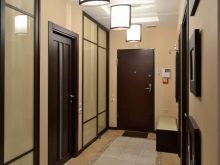

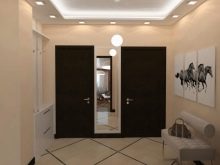
- The possibility of zoning. Even if the corridor is not large, it will be good to place several different light sources in it. So you can turn on only devices in the desired area, creating optimal lighting.
For example, you can highlight the entrance area with light, so that it is convenient to put on shoes and fasten clothing.
You can highlight the doors to the room, a place near the cabinet, mirrors, etc. In the spacious hall, it is advisable to make several switches. This will allow you to quickly illuminate the space, regardless of which part of the apartment you are in the hallway.
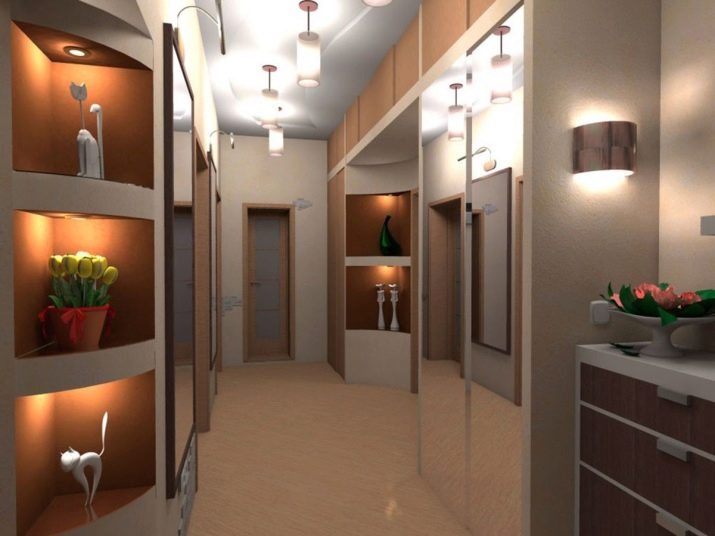
- Compliance with the style of decor. Do not forget about the appearance of the devices. Classics are characterized by crystal or glass elegant chandeliers and sconces. Loft involves brutal lamps in metal shades. In rooms decorated in a minimalist style, built-in point and flat ceiling models are usually used. Art Nouveau gives scope for imagination and allows for a variety of original options. When choosing a product design, the decoration of the room and the furniture standing in it are taken into account.

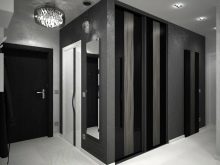
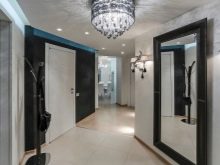
Types of lighting
For this room, there are three main types of lighting.
- The general. This is one or more devices responsible for lighting the entire space. The switch for them is usually located at the entrance to the apartment.
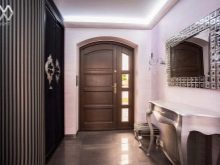
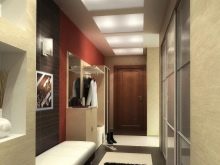
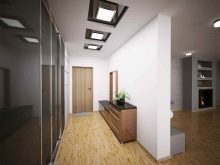
- Local This is the allocation of specific zones.
During the day, such devices can be turned on separately from a common light source, for example, to look in the mirror or to put things in order in the closet.
In the dark, they supplement the main device, increasing the intensity of lighting in a certain area if necessary.

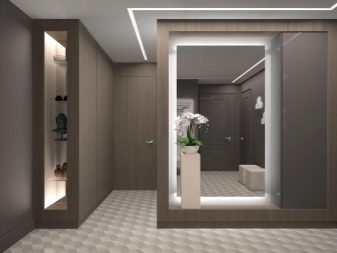
- Decorative. These are devices that perform the function of decorating the hallway. Also, these are design techniques that make it possible to emphasize favorably individual elements of the decor or visually expand the space.

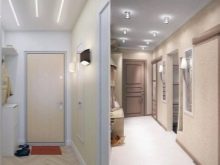

All three types are not always used together. The choice depends on the characteristics of a particular room, its shape, interior. Consider the options for lighting in more detail.
The choice of lighting
The main
Devices designed for general lighting are the basis of the whole system in spacious halls. If the corridor is very small, you can limit yourself only to them. The choice of options is wide.
- Central chandelier or lamp with several shades. Such devices are located under the ceiling in the center of the room. They look good. However, if the hallway is medium or large, an addition in the form of highlighting local areas is necessary.
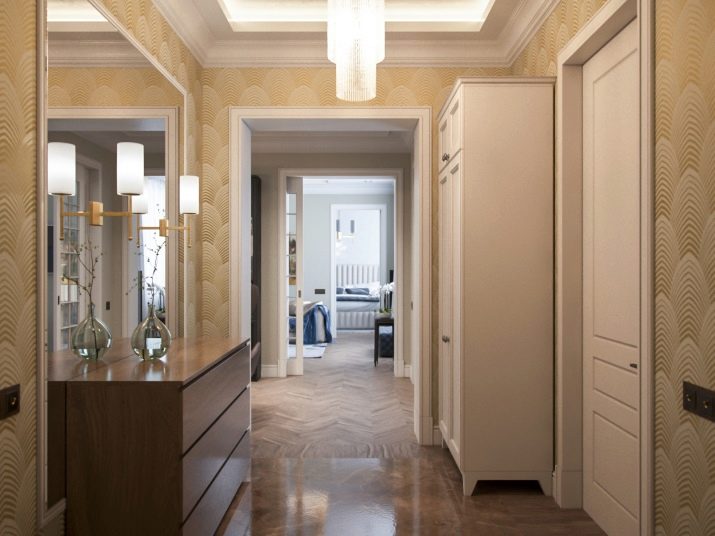
- Spot This is a device that consists of several fixtures mounted on a rail.
Due to the size and structural features, such a device can independently cope with providing a small room with enough light.
The advantage of the device also lies in the fact that the position of the lampshades changes as desired. Thus, you can direct the light flux to specific places, achieving the desired result.
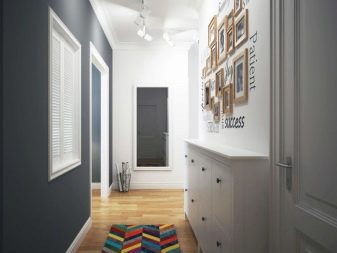
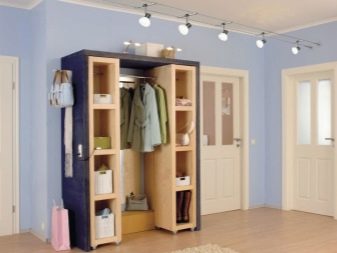
- Spotlights. Often they are used as an addition to the main chandelier. However, if the design is minimalistic, you can limit yourself only to such devices, placing them around the perimeter. It should be noted that this solution can be implemented only when installing a suspended or suspended ceiling.


- Sconce. These are wall-mounted models that usually complement ceiling light sources.
But if the room is small, you can use them as the main ones, thus realizing the design idea.
In this case, two devices are not limited. Mount them at a height of 2 meters (not lower). Due to this, the light is evenly scattered, and the devices themselves do not prevent people from moving freely.
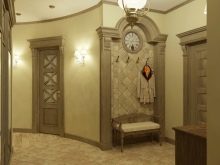
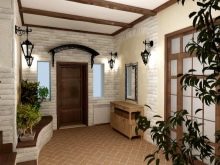
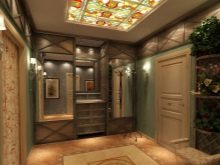
Local
Lighting of specific areas makes the stay in the hallway more comfortable. Extra light needs a place near a mirror, cabinet or shoe cabinet. Shelves, especially if they are in niches, it is also desirable to highlight.
When ordering a wardrobe, usually immediately provide a system of fixtures built into the model body. More often they are located in the visor of the product, less often - in the walls.
You can make it so that the light will turn on when the door is opened automatically. As for the mirror, the backlight can be mounted on the wall in the form of a sconce (on top or on the sides of the subject). You can also purchase a model in a luminous frame.

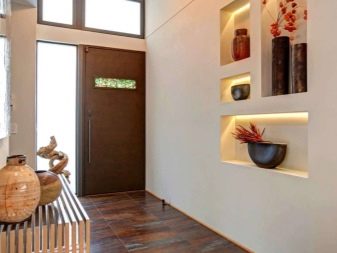
Decorative
Such lighting is optional. However, with its presence, spectacular accents appear, an enchanting play of light and shadow, the versatility of the interior. If the room is decorated with paintings or photos within, they can be distinguished. Spotlights or sconces can help with this. You can also light niches with decorative elements, arches.
An illuminated stained glass window will look great in a classic interior. It can be placed on the wall or ceiling, and the backlight is mounted on the back. This technique will not only decorate the hallway, but also create the illusion of penetration into the sunlight.
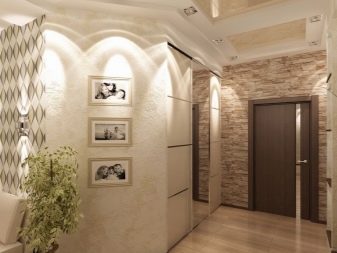
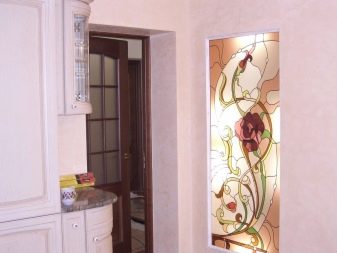
Of course, one can not help but mention the LED strip, which is often used to decorate modern interiors.
This option is convenient in that it allows you to create light strips of any length and shape, including rounded shapes and closed contours. At the same time, the tape can not only emit white cold or yellow warm light. It can be colored, which allows you to implement the most unusual projects. Light can be made both bright and directional, and soft, diffused. In the latter case, the tape simply needs to be placed in a special aluminum profile.
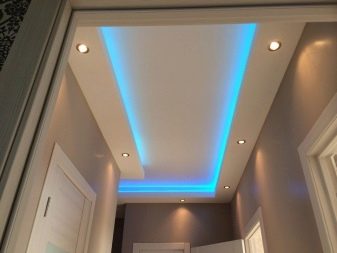
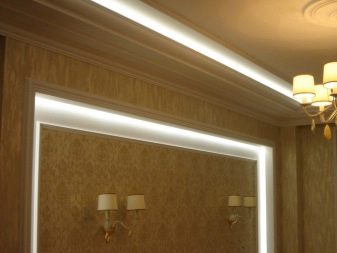
There are several options for installing LED strip.
- Along the perimeter of the ceiling. In this case, the backlight visually erases the boundaries, creating the effect of airiness of space.
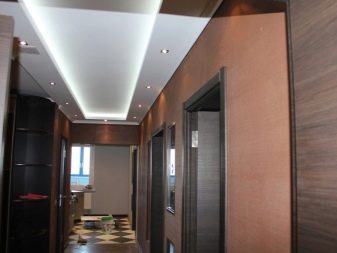
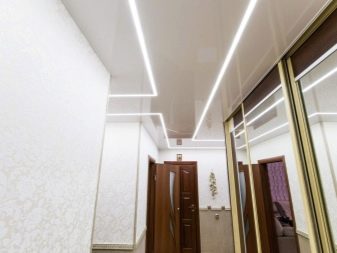
- On the contour of the floor. If there is a bit of furniture in the hallway, this option will look very impressive. For floor lighting, special skirtings are used. The tape is inserted into the recess, which is then closed with a transparent bar. The practical benefits of this technique may be noticeable at night. Soft light will allow you to calmly move along the corridor, not including the main lamp. Also, a luminous tape allows you to highlight surface irregularities if they exist (for example, steps).
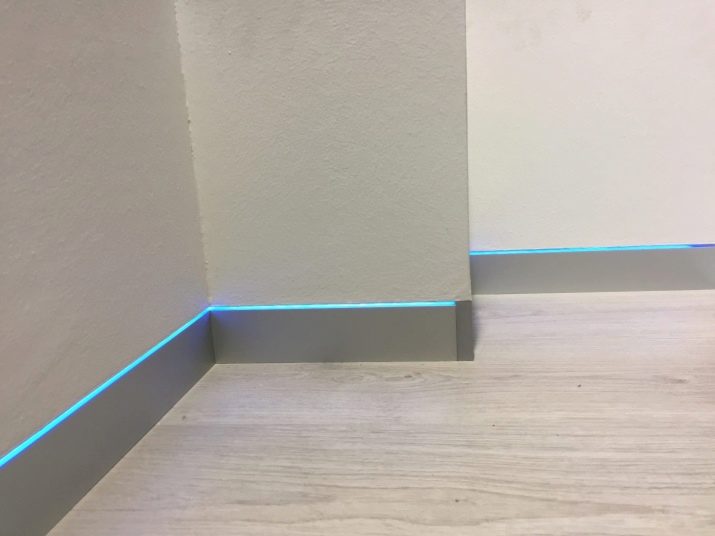
- In the doorway, arch. This technique allows you to effectively highlight the door, as if inviting to enter. The arch in this design will look very solemn.

- In the niches. The selection of niches and shelves will not only make it easy to see what is on them, but also make the space more voluminous.
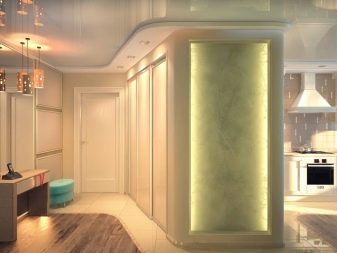
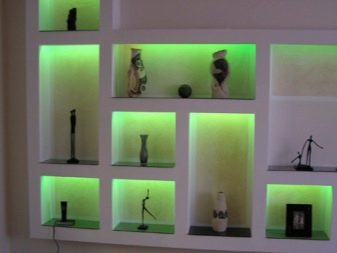
- Inside the furniture. Even if there is a backlight on the visor of the cabinet, its inside is not lit enough. This is especially true for the lower shelves. Installing the tape makes it easy to find the right thing. In this way, a shoe cabinet can also be illuminated.
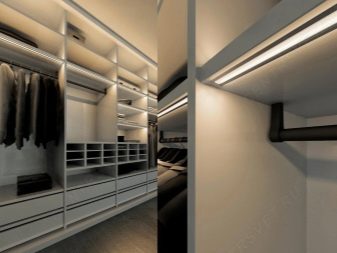
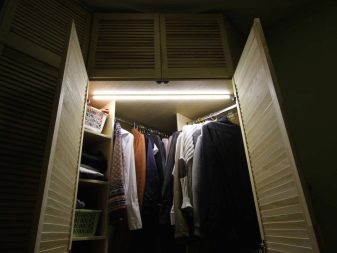
Choosing the degree of brightness, you need to focus on the purpose of the tape. To create the effect of light geometry on the ceiling or floor, you can take the option with a large number of diodes and small pitch.
For the effect of "soaring" and blurry borders, soft diffused lighting is necessary.
Apertures and doors are also decorated with a muffled light so that the incoming person does not blind. As for compatibility with other light fixtures, usually the tape is combined with spot models.
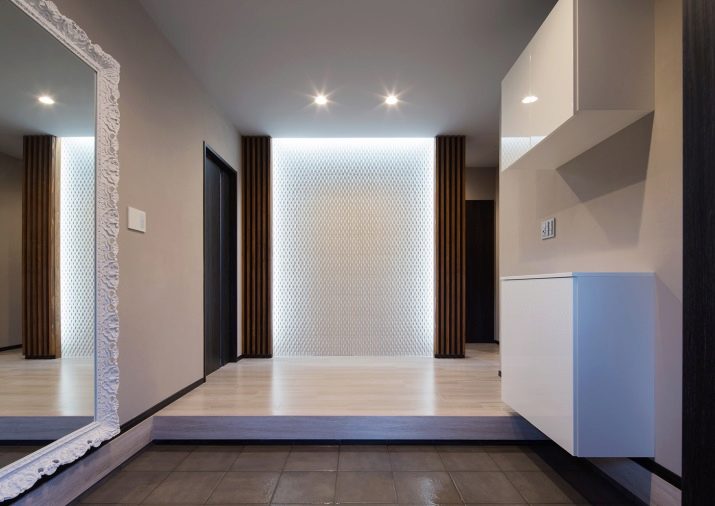
Proper placement
If the hallway is spacious, has a square or rectangular shape, any options for placing fixtures are possible. If the room is non-standard, a special approach is required here. The lighting scheme should be carefully thought out, because the design flaws should be turned into advantages if possible.

Small room
In poor lighting, the small entrance hall will seem even more cramped. Therefore, with a small number of devices, it is important to illuminate all areas.
A great solution is to use spots. Each structural element can be directed in the right direction (to the front door, mirror, cabinet).
Spotlights are also suitable. They can be used independently, or can be combined with a small chandelier.
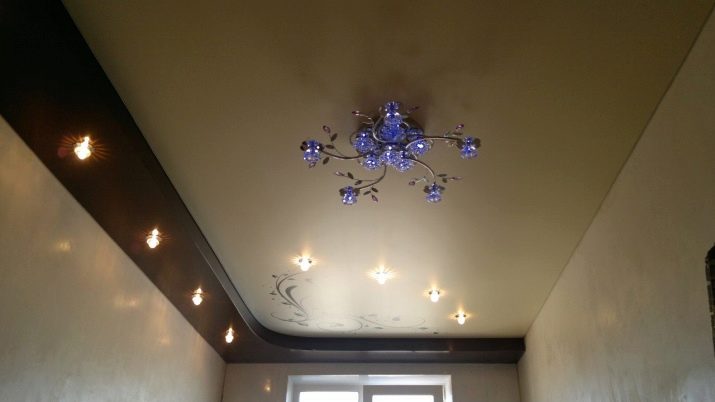
Long room
If the corridor is long and narrow, spotlights are the best choice. They are located from the front door along the entire length of the room at regular intervals. If the room has very high ceilings, you can use wall lighting. The sconces are mounted on one or both walls, depending on the width of the corridor. Well, of course, you can beat the large length of the room with the help of LED strip. So in the dark the corridor will seem like a fantastic place.
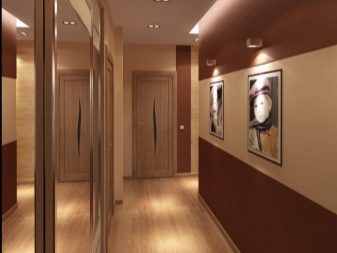
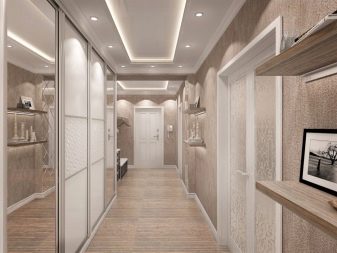
Good examples in the interior
- The elegance of the classical style is emphasized by a sconce with imitation of candlesticks and a delicate chandelier.

- In modern interiors, a modest sconce looks good in combination with spotlights.
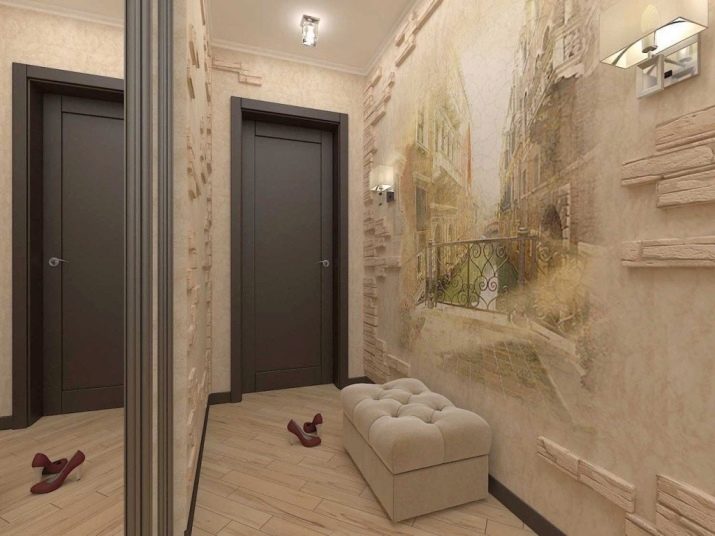
- The original design of the entrance door zone with wall-mounted appliances is complemented by a ceiling LED strip.
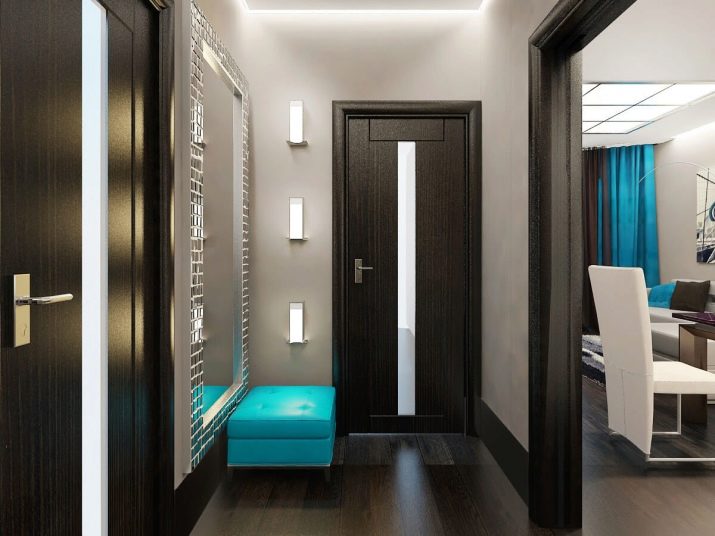
- Illumination of a large mirror around the perimeter is an excellent design move.
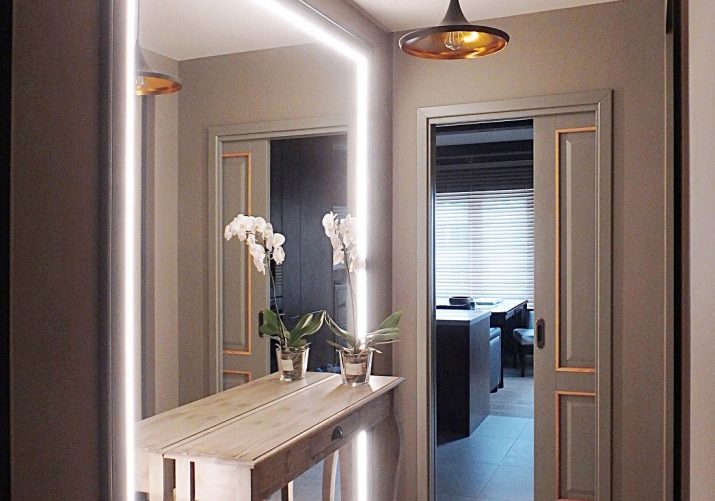
- The chandelier, sconces and spotlights look good together due to the laconic design.
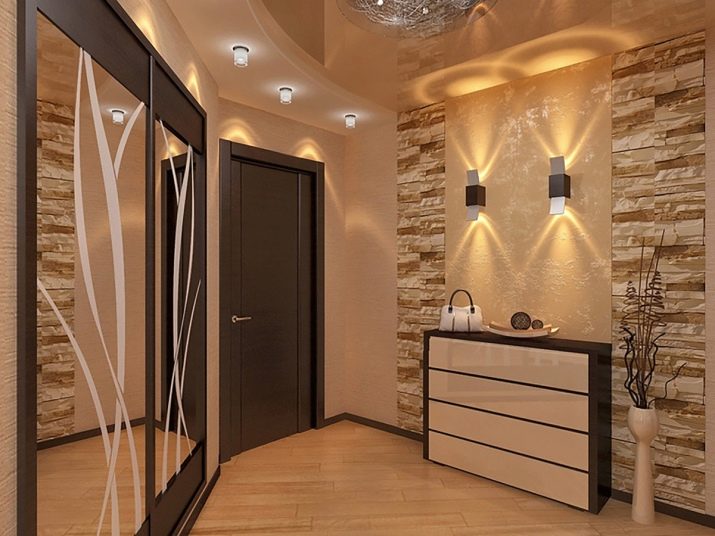
How to choose the lighting for the hallway, see below.
